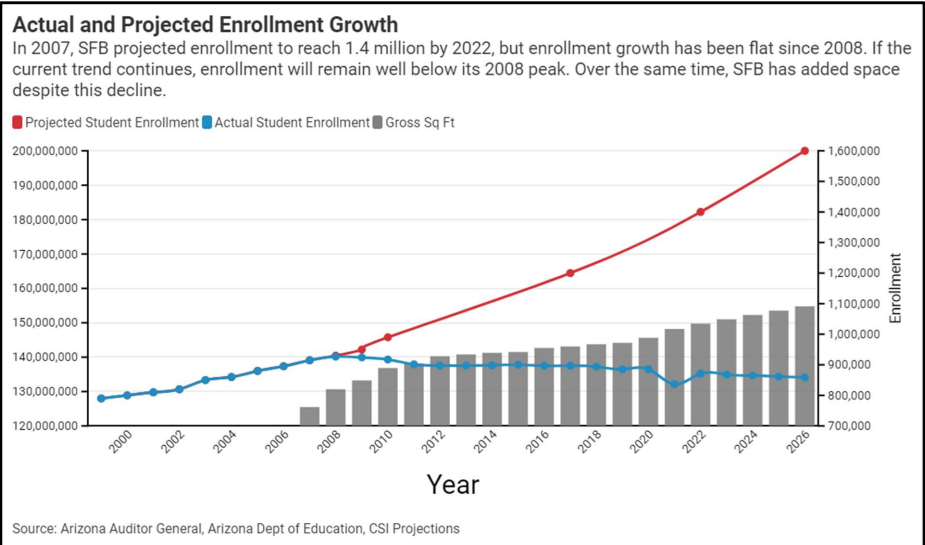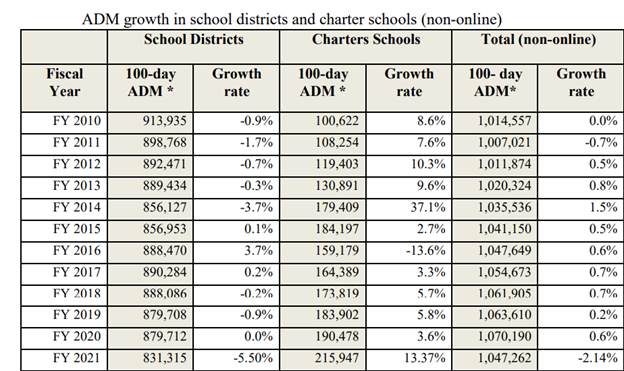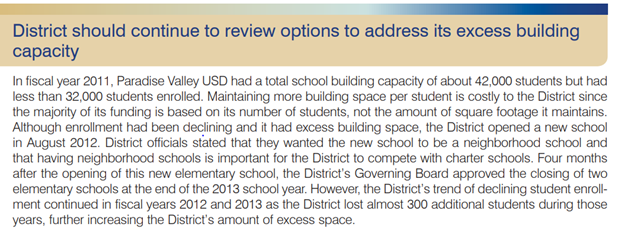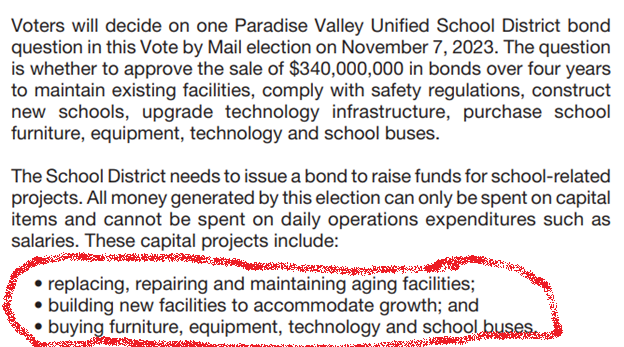In 2005, the Alaskan Congressional delegation created a national controversy when they attempted to secure $398,000,000 to build a bridge to an island with 50 inhabitants. Known as “the Bridge to Nowhere” this effort lingered on until Congress finally halted it in 2011. The islanders continued to make do with a ferry. Arizona school districts, however, already full of vacant space, are determined to make Alaskan Congressional pork look reasonable by comparison in building schools to nowhere.

This chart from a revealing study by the Common Sense Institute shows a central planning/crony capitalism dynamic in Arizona district school construction. The red line (projected statewide enrollment) departed from reality beginning with the Great Recession, whereupon it departs dramatically from the blue line (actual statewide enrollment). A giant nationwide real-estate bust that prevents people from selling their houses and moving to Arizona was not great for enrollment growth. The Baby Bust 2008 kicked off depressing enrollment growth once the real-estate crisis faded.
Despite the statewide district enrollment decline that started that year, Arizona school districts added approximately 20 million square feet of new district school space. Note that the blue line in the Common Sense Institute chart above represents total K-12 enrollment, rather than district enrollment. What has been happening with district enrollment? Glad you asked:

Between a Baby Bust that shows no sign of relenting, continued charter school enrollment growth and new kid on the block Universal ESA, you might think that Arizona school districts would buckle down and focus on putting more resources into the classroom. You would however be entirely mistaken. Instead, districts are asking voters for billions of dollars in (you guessed it!) new school construction! More than $4.3 billion, to be precise.
The district I live in, Paradise Valley Unified School District, is going out for a half billion dollars in total bond debt. In 2013, the Arizona auditor general noted that the district had a physical plant space for 42,000 students, but only 32,000 students enrolled. Therefore, the auditor general recommended leasing vacant space:

Paradise Valley Unified was down to 28,707 students in 2022. In the summer of 2023, the district announced the possibility of closing schools in response to enrollment decline. In the fall it will hold a bond election to take on an extra $558,716,667 in debt for the following purposes:

The solution to a district with space for 42,000 students but fewer than 29,000 students would be to retire aging facilities rather than replace or repair them. The district’s enrollment has declined by 18% since the year 2000, making the notion that the district needs to “accommodate growth” odd.
Right about now you might be wondering, “what’s going on here?” The Arizona Center for Investigative Reporting provided an important clue in 2017 when it found that district bond campaigns are often 100% financed by school construction firms. Like the construction of ghost cities in China, politics and cronyism rather than necessity drive these bonds.
When the Baby Boomers moved on to college and careers and were replaced by Baby Busters, many schools closed. Today, we see schools remaining either under-used or vacant. Arizona policymakers should require all future bond elections to be held on the uniform election date in even-numbered years and should consider creating a base-closing commission to get zombie schools out of district backlogs and into some sort of productive use.